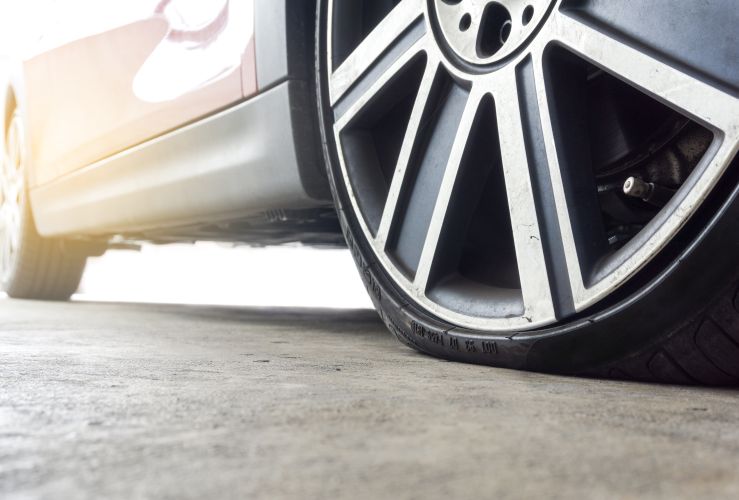A flat tyre usually means one of two things: you have to stop and replace the tyre, or, more likely, you need to call your car breakdown service for help. However, if you have run-flat tyres fitted, you may be able to continue driving for a short distance, even after suffering a loss of tyre pressure.

Run-flat tyres essentially make it possible to drive between 50 and 100 miles, so you can reach a garage or your home.
Run-flat tyres were first developed in the 1930s, as a way of counteracting the risks of a tyre blow-out - which could have life-threatening consequences in that period. Various manufacturers have developed run-flat tyres over the decades, but they only represent a tiny portion of the tyre market. However, they are very much in demand among manufacturers of close-protection and military vehicles.
What is a self-supporting tyre?
Among the various kinds of run-flat technology, the 'self-supporting tyre' is most common. These tyres feature heavily-reinforced sidewalls for when and if the tyre loses pressure.
Why buy run-flats?
With a set of run-flat tyres fitted, you should be able to drive your vehicle for some distance. If you had regular tyres fitted, you would need to have the tyre changed by the roadside straight away, since driving on normal flat tyres might damage the wheel. Run-flats give you more stability following a blowout and might make your vehicle lighter overall - potentially improving fuel efficiency.
Why might they not be suitable for you?
If you have run-flats fitted, chances are the manufacturer would not have placed a spare wheel in your vehicle. A proper spare wheel might be useful as a more permanent solution to a damaged tyre - particularly if you are far from home.
There is also some evidence that run-flats wear down more quickly than regular tyres because they feature softer material to make the ride less hard. Indeed, a harder, less pleasant ride is another drawback of the run-flat.
And even if you have run-flats fitted, it is still possible to suffer a blowout. Additionally, if the damage occurs in the tyre's sidewall, you will need to call your breakdown service provider for help, since the tyre is beyond use.
It's also worth noting that run-flats are more expensive than normal tyres, and as a general rule cannot be repaired.
And because the demand for run-flats is very low, few garages stock them.




